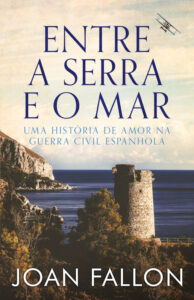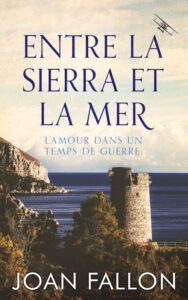SPANISH LAVENDER is a love story set in the Spanish Civil War.
A riveting read of passion and love that spans three generations.
Elizabeth is visiting her parents in Málaga when the Spanish Civil War breaks out. All foreigners are told they must evacuate – the Nationalist soldiers are coming and no-one is safe.
But Elizabeth’s ambition is to be a photo-journalist and she decides she will stay, despite her parents’ objections. Alone in the devastated city of Málaga, she begins to regret her hasty decision until she meets two young men, Juan, an idealistic Spaniard and Alex, a pragmatic Englishman.
As the troops grow ever closer they decide to flee along the coast to Álmeria.
Amongst the death and carnage she falls in love with Juan, but as they try to make their escape along the Carretera del Muerte, the highway of death, they become separated.
Not knowing if her lover is alive or dead she must choose between staying and risking death at the hands of the Nationalists or fleeing back to England with Alex.
Seventy years later Kate, Elizabeth´s granddaughter, is left a legacy following the death of her grandfather, a legacy that opens a Pandora´s box of secrets and lies which Kate can only unravel by returning to Spain.
All the historical details in the book have been carefully researched, even down to the state of the weather that month; I have tried to give an accurate picture of the events of February 1937 in Malaga and on the Malaga-Almeria road.
Although the characters in the novel, ‘Spanish Lavender,’ are fictitious, the historical details are based on actual events that took place during the Spanish Civil War in February 1937 in the city of Malaga.
Like many people I had never heard about the massacre on the Malaga-Almeria road. I knew of the bombing of Guernica, immortalised by Picasso; I had heard about the siege of Madrid and the battle of the Ebro, but nowhere had I read anything about innocent women and children being shelled by German and Spanish gunboats as they tried to flee to safety.
I had not heard that, even as late as the 1960s, they were discovering the bones of the victims along that stretch of road.
It was while I was writing an oral history on women in contemporary Spain that one of my interviewees started to tell me about what had happened in 1937. Her own father had been caught up in the events of those terrible days.
I was so intrigued by what she had to tell me that I suspended my research on the book I was writing, and devoted myself to telling this story.
I found that there were a number of first hand accounts written at that time, including a book by Gamel Woolsey, an American writer who lived in the area and a book by Arthur Koestler, a journalist, who visited Malaga in 1937 and was later imprisoned by the Nationalist forces.




